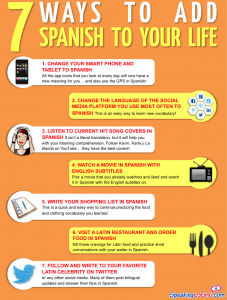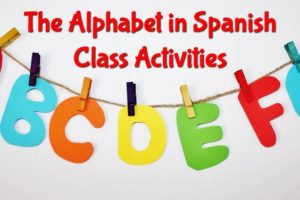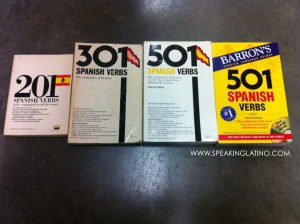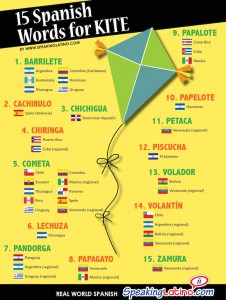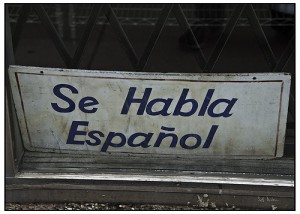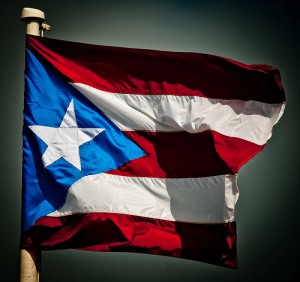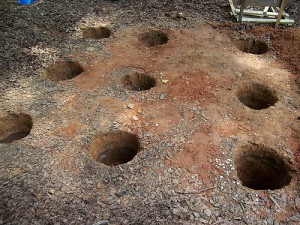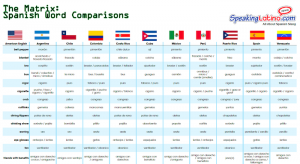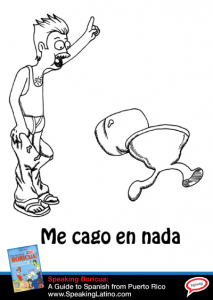If you are learning Spanish think about infusing your daily life with it. Here are some quick and easy ideas to immerse into Spanish while doing your regular daily routines. 1. CHANGE YOUR SMART PHONE AND TABLET TO SPANISH. All the app icons that you look at every day will now have a new meaning for […]
The Alphabet in Spanish Class Activities
The Alphabet in Spanish Mini Lesson Plan – Two Speaking Latino original videos cover the alphabet and its pronunciation in Spanish. Students watch the videos, take notes and do an oral practice from a presentation with audio clips from a native speaker. Alphabet Pronunciation and Cognates Lesson Plan – Through viewing an authentic musical video, students […]
Greetings and Introductions Spanish Class Activities
Lesson Plan – Greetings in Spanish – Students learn the basic greetings in Spanish with a Speaking Latino original video. They take notes, complete the worksheet, and do the oral practice. Lesson Plan – Introductions in Spanish – Students learn how to introduce themselves and others with a Speaking Latino original video. They take notes and complete […]
Comay, Yerna, Chozno & Other Spanish Words for Family Members and Relatives: Infographic
As you learn a language, one of the major tasks is vocabulary acquisition. The more words you know, the better you communicate. Occasionally, you run across words that are not translatable, but for the most part words in one language have an equivalent in another. In the process of acquiring more vocabulary you will notice […]
Classroom Objects and Back to School Vocabulary Spanish Class Activities
TV Ad Activity: Banefe – Comercial 20% dcto. en compras escolares – Learn the school supplies vocabulary with this activity that uses an authentic TV ad from Latin America. The activity uses the Integrated Performance Assessment (IPA) format. School Supplies, School Subjects, and School Schedules Vocabulary Lesson Plan – Through viewing videos on the Internet, […]
Irregular Preterite Verbs Spanish Class Activities
Lesson Plan – Irregular Preterite Verbs – Hiking, Outdoor Activities, the Weather – After completing this lesson, students will be able to describe outdoor activities, hiking in detail, the weather and weather forecasts, and talk about past events, especially using irregular preterite verbs. Objectives Students can describe outdoor activities, hiking in detail, and the weather […]
AL REVÉS: How to Translate This Spanish Phrase to English
So I’m getting dressed the other day. I slip on the undies and my wife says: Tienes los calzoncillos al revés. I immediately assumed they were backwards. Namely, that the label side was in the front and the normal front part of the underwear, in the back. And here’s where we ran into a language […]
Barron’s Spanish Verbs Book Through Time
Recently in Portland, Oregon on my honeymoon I stopped in at one of the world’s most entertaining places: Powell’s bookstore. For anyone that has never been it is a must-see before you kick the bucket. Me being me, I ran directly to the Red Room, second floor. That’s the language section. As any vain author […]
15 Spanish Words for KITE: Infographic
You’d think that the Spanish word for KITE would be an easy word. Four letters, nothing fancy, just some twigs, paper and string. A mere kid’s toy. Simple, right? Quite the opposite, folks. It turns out there are at least 15 Spanish language words for the same object. KITE comes to mind as the word […]
10 Funny Product Names from the Supermarket: My Fun Spanish Lesson in Central America
Here is a collection of product names in Spanish I found on a recent trip to the Western Caribbean. Throughout a 10-year career in Marketing, I experienced the importance of establishing a strong brand name. These products names are catchy and funny and now that I am more aware of the differences of Spanish languages […]
Learning Spanish Lessons: The Distinction Between PARECER and PARECERSE
Parecer and parecerse a both mean “to resemble” or “to look like” but they cannot be used interchangeably. Parecer is used to describe the appearance of something, such as “He looks like a teacher” while parecerse is used to compare between items, such as “He looks like my teacher Mr. Sanchez.” or to give an […]
Learn Spanish: Translating BUT to Spanish with PERO and SINO / SINO QUE
The words pero and sino both translate to “but.” However, they cannot be used interchangeably. Pero is used when you are looking to convey “nevertheless” or “yet.” Examples: Estaba muy cansada, pero no me dormí. (I didn’t fall asleep, but I was very tired.) No tenemos gaseosa, pero tenemos limonada. (We don’t have soda, but […]
My Wedding Day
Today’s theme is Wedding Day so I have a couple quick Speaking Latino basic Spanish words for wedding. The first is voto. I recently learned that this word has two meanings. Many of you probably know that it means vote as in “vote early” and “vote often,” or “I have to go vote today for […]
Coño meaning in Spanish: A comprehensive guide
The quick answer to what coño means is that it’s either a vulgar word for a woman’s vagina, or an exclamation of surprise like “Damn!” Most popular uses of coño in English Before diving into the complete answers to what does coño mean in Spanish, here are some of the most common uses: ay coño […]
English to Spanish Translations: 3 Ways TO MOVE in Spanish
This post is part of the series Warming up for El Día E: Posts to Improve Your Spanish. El Día E is a world-wide celebration of the Spanish Language that will take place on June 23th, 2012. Posts in this series to celebrate El Día E: 1. Join the Celebration of El Día E 2. […]
4 Strategies to Learn Spanish Slang Abroad
A couple of weeks ago a Speaking Latino follower asked me for advice on how to learn “Puerto Rican Spanish as well as proper Spanish”. He was proactively preparing for a Study Abroad Program in San Juan that will last up to 6 weeks. I privately answered his question, but then I decided that these […]
Learn Spanish Words for TO KNOW: SABER versus CONOCER
This post is part of the series Warming up for El Día E: Posts to Improve Your Spanish. El Día E is a world-wide celebration of the Spanish Language that will take place on June 23th, 2012. Posts in this series to celebrate El Día E: 1. Join the Celebration of El Día E 2. […]
Learning Spanish Lessons: The Difference Between PEDIR and PREGUNTAR
This post is part of the series Warming up for El Día E: Posts to Improve Your Spanish. El Día E is a world-wide celebration of the Spanish Language that will take place on June 23th, 2012. Posts in this series to celebrate El Día E: 1. Join the Celebration of El Día E 2. […]
Why Use Tongue Twisters in Spanish
Tongue twisters or trabalenguas are phrases that use repetitive syllable sounds that make them difficult to pronounce but when practiced can improve your Spanish pronunciation. Because of the rhymes, they are often used with children as a fun exercise to practice Spanish pronunciation and diction when learning the language at an early age. The objective […]
26 Epic Spanish Tongue Twisters (to Improve Pronunciation)
Tongue twisters or trabalenguas are phrases that use repetitive sounds to help you learn Spanish. Those repetitive sounds make them tricky to pronounce at first but when practiced can improve your Spanish pronunciation significantly. Plus it’s one of the most fun ways to practice Spanish!Whether you are looking for simple Spanish tongue twisters for kids […]
Which is the Hardest Spanish Language Word for You to Pronounce?
For years now one Spanish word beat up on me regularly; I could never pronounce it properly. I learned to hate it, even avoided using the word. This lasted for years until last week when my girlfriend (a Puerto Rican native Spanish speaker) walked me through the Spanish pronunciation a couple times. It now rolls […]
Join the Celebration of El Día E: The Day of Spanish Language
The Spanish language has its own day for celebration. And it’s so big that countries such as Japan, Turkey, Australia, Russia, and China have joined. I am talking about El Día E: La fiesta de todos los que hablamos español, a project that the Instituto Cervantes will celebrate for the fourth time on June 23th, […]
Learning Spanish Slang: 9 Ways to Identify the Puerto Rico Accent and Pronunciation
This post is an excerpt from the Puerto Rican bestseller Speaking Boricua: A Practical Guide to Puerto Rican Spanish. Learning Spanish Slang: Pronunciation and Accent from Puerto Rico Puerto Rico, as in any other country in the world, has its own unique pronunciation for certain words, phrases and sounds. If you have only ever heard […]
Spanish Language Words for HOLE
A few days ago, I sat down at my favorite Italian place in South Beach. It’s a locals place where the prices are reasonable and the food amazing. Many of the staff are Italian and speak Spanish. And being Miami, lots of other people speak Spanish too. Almost more than English in some areas. The […]
The Matrix: English to Spanish Words Compared by Country
The text for this post originally appeared at Mezzofanti Guild. Thanks, Donovan, for the opportunity! Examples of Latin American Spanish dialect differences Here’s the thing about learning Spanish: Most teachers lie to you from the first day. Hola bursts through their lips. It may be implicit lying, but they have hidden the truth. And not the […]
Learn Puerto Rican Spanish Slang: Bad Words and Phrases and What to Say Instead
Life is not as simple as we wish. Sometimes things do not work out the way we planned. This is when colorful language flies and we use curse words/phrases to relieve stress. In this post I will teach you some useful Puerto Rican profanities, with a twist. I’m featuring seven swear phrases from my beloved […]
AHORITA vs HORITA: An Embarrassing Spanish Speaking Lesson
Ahora is a universal word in Spanish that means now. It is simple, easy to remember, extremely useful and one of the first words a Spanish learner picks up. It would be so helpful if there also existed a universal word for right now. Alas, twas not to be. The words ahorita, ahora mismo and […]
15 Additional Popular English Songs in Spanish
After the success of the first post Singing Latino: 12 Popular English Songs in Spanish, a sequel became mandatory. Here I feature 15 additional English songs with their Spanish versions, plus a Spanglish “bonus track”. To listen to a demo of each version, click on each MP3 link and conclude if it’s a good Spanish […]
HUEVEAR: The Most Important Chile Spanish Slang Word
When learning a language look for words that can increase your vocabulary in leaps with little effort. For example, the word taco in Spanish can mean 1) a pool stick, or 2) the heel of a shoe. In Chile it can also mean 3) a notepad or paper for writing notes, or 4) a traffic […]
Puerto Rican Spanish Slang: The Origin of CANGRIMAN, FOSTRÓ, CHAVOS, ZAFACÓN and LIMBER
Ever stop to think how Spanish slang words develop? It’s a fun experience since their history will often teach you about major historical influences in a culture. These 5 Puerto Rican words do just that. A colony of Spain for 400 years, we Puerto Ricans adopted words that are still alive today. For example, we […]
